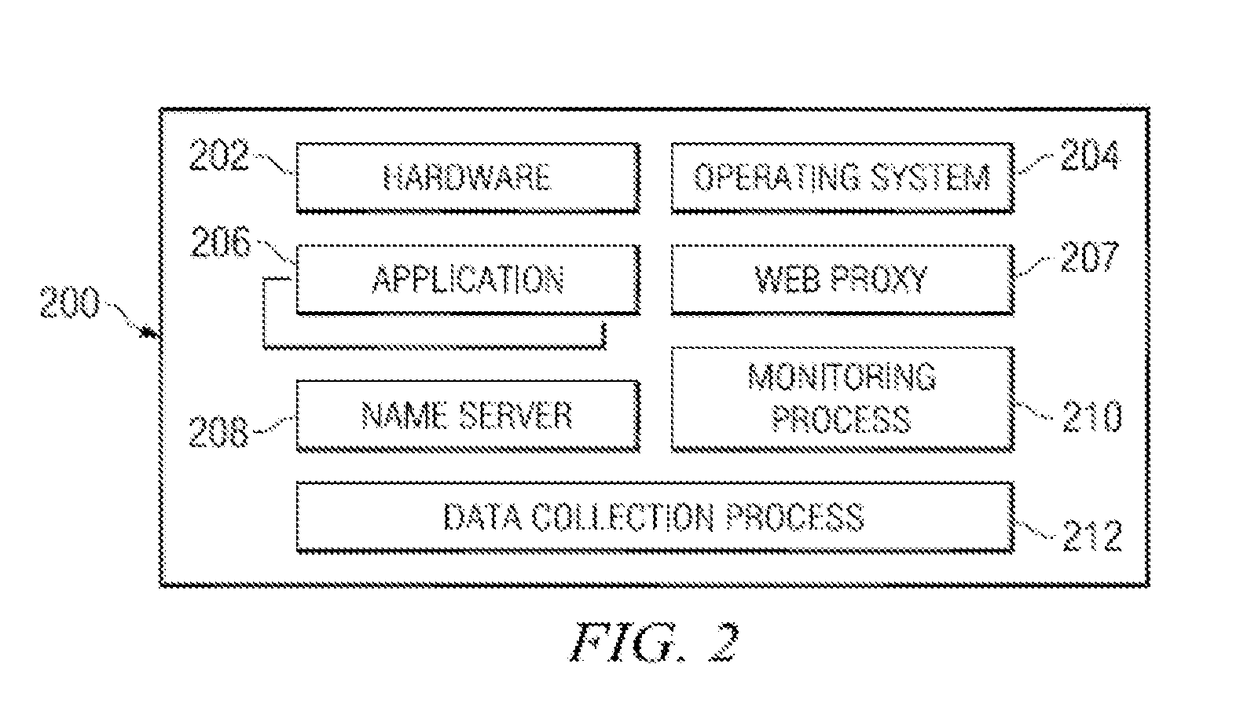Methods and apparatus for accelerating content authored for multiple devices
a content delivery and multi-device technology, applied in the field of distributed data processing systems and to the delivery of web content, can solve the problems of performance and similar challenges in the delivery of content to these client devices, and achieve the effects of accelerating content delivery, improving web content delivery, and reducing payload
- Summary
- Abstract
- Description
- Claims
- Application Information
AI Technical Summary
Benefits of technology
Problems solved by technology
Method used
Image
Examples
example algorithm 1
for Proxy or Other Intermediary
[0073]1. Upon receiving a request, consult a device detection and characterization database and retrieve characteristics for the currently-requesting device. This may be accomplished using known products and / or techniques that identify a client device based on information in a user-agent HTTP header field (or UA profile, or other information in the request) sent from the client at request time, and then look up a set of characteristics for the given client device. Non-limiting examples of products that are used to identify and characterize client devices include Device Atlas and WURFL (Wireless Universal Resource FiLe).[0074]Alternatively, a device detection and characterization database can be built by testing client devices to capture their user agent and storing this information in the database, along with known characteristics of the device (e.g., obtained by buying the particular device or getting information about it from the manufacturer or othe...
example algorithm 2
for Proxy or Other Intermediary
( . . . in addition to the above items . . . )
[0078]4. Make assertions regarding web browser box model layout for images and resize to smaller dimensions than maximum screen dimensions.[0079]5. Remove CSS blocks with the suffix “:hover” that are irrelevant because the currently requesting client device is touch-only, such as an Apple iPad. Allow blacklisting of CSS blocks for this treatment so that certain CSS blocks are never removed.[0080]6. Remove HTML elements that the proxy determines, based on its knowledge of requesting client, would not be displayed by the client device in compliance with the CSS, and not mentioned in any Javascript blocks according to normal DOM and jQuery call syntax. Allow blacklisting HTML elements, and pages on which they may appear, for this treatment. A non-limiting example of this is described in more detail in the section below titled “Example of HTML Eliding By CSS Reference”.[0081]7. Remove HTML elements that have be...
PUM
 Login to View More
Login to View More Abstract
Description
Claims
Application Information
 Login to View More
Login to View More - R&D
- Intellectual Property
- Life Sciences
- Materials
- Tech Scout
- Unparalleled Data Quality
- Higher Quality Content
- 60% Fewer Hallucinations
Browse by: Latest US Patents, China's latest patents, Technical Efficacy Thesaurus, Application Domain, Technology Topic, Popular Technical Reports.
© 2025 PatSnap. All rights reserved.Legal|Privacy policy|Modern Slavery Act Transparency Statement|Sitemap|About US| Contact US: help@patsnap.com



